93 start with P start with P
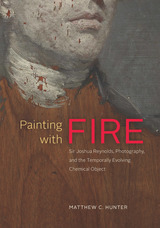
Tracing the long arc of chemically produced and reproduced art from the 1670s through the 1860s, the book reconsiders early photography by situating it in relationship to Reynolds’s replicated paintings and the literal engines of British industry. By following the chemicals, Painting with Fire remaps familiar stories about academic painting and pictorial experiment amid the industrialization of chemical knowledge.
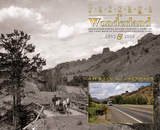
Amundson examines the physical changes along "the most scenic fifty miles in America" and explores the cultural and natural history behind them. This careful analysis of the paired images make Passage to Wonderland more than a "then and now" photography book--it is a unique exploration of the interconnectedness between the Old West and the New West. It will be a wonderful companion for those touring the Cody Road as well as those armchair tourists who can follow the road on Google Earth using the provided GPS coordinates.
The University Press of Colorado gratefully acknowledges the generous support of the Charles Redd Center for Western Studies at Brigham Young University toward the publication of this book.

In Pastoral and Monumental, Donald C. Jackson chronicles America’s longtime fascination with dams as represented on picture postcards from the late nineteenth to the mid-twentieth century. Through over four hundred images, Jackson documents the remarkable transformation of dams and their significance to the environment and culture of America.
Initially, dams were portrayed in pastoral settings on postcards that might jokingly proclaim them as “a dam pretty place.” But scenes of flood damage, dam collapses, and other disasters also captured people’s attention. Later, images of New Deal projects, such as the Hoover Dam, Grand Coulee Dam, and Norris Dam, symbolized America’s rise from the Great Depression through monumental public works and technological innovation. Jackson relates the practical applications of dams, describing their use in irrigation, navigation, flood control, hydroelectric power, milling, mining, and manufacturing. He chronicles changing construction techniques, from small timber mill dams to those more massive and more critical to a society dependent on instant access to electricity and potable water.
Concurrent to the evolution of dam technology, Jackson recounts the rise of a postcard culture that was fueled by advances in printing, photography, lowered postal rates, and America’s fascination with visual imagery. In 1910, almost one billion postcards were mailed through the U.S. Postal Service, and for a period of over fifty years, postcards featuring dams were “all the rage.” Whether displaying the charms of an old mill, the aftermath of a devastating flood, or the construction of a colossal gravity dam, these postcards were a testament to how people perceived dams as structures of both beauty and technological power.
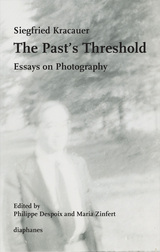
This volume brings together for the first time all of Kracauer’s essays on photography that he wrote between 1927 and 1933 as a journalist for the Frankfurter Zeitung, as well as an essay that appeared in the Magazine of Art after his exile in America, where he would spend the last twenty-five years of his life. The texts show Kracauer as a pioneering thinker of the photographic medium in addition to the important historian, and theorist, of film that he is acknowledged to have been. His writings here build a cohesive theory on the affinities between photography, memory and history.
With a foreword by Philippe Despoix offering insights into Kracauer’s theories and the historical context, and a Curriculum vitae in pictures, photographs from the Kracauer estate annotated by Maria Zinfert.
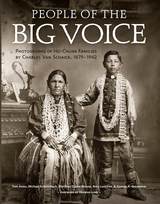
People of the Big Voice tells the visual history of Ho-Chunk families at the turn of the twentieth century and beyond as depicted through the lens of Black River Falls, Wisconsin studio photographer, Charles Van Schaick. The family relationships between those who “sat for the photographer” are clearly visible in these images—sisters, friends, families, young couples—who appear and reappear to fill in a chronicle spanning from 1879 to 1942. Also included are candid shots of Ho-Chunk on the streets of Black River Falls, outside family dwellings, and at powwows. As author and Ho-Chunk tribal member Amy Lonetree writes, “A significant number of the images were taken just a few short years after the darkest, most devastating period for the Ho-Chunk. Invasion, diseases, warfare, forced assimilation, loss of land, and repeated forced removals from our beloved homelands left the Ho-Chunk people in a fight for their culture and their lives.”

Miyazaki also photographed the water as he went, creating waterscapes of the ever-changing lake affected by weather and time. Perimeter gathers these images together, creating a diverse portrait of both people and a place, encapsulating Lake Michigan’s significance to those who are drawn to it.

In 1875, after being acquitted for the murder of his wife’s lover, Eadweard Muybridge spent a year photographing along the Central American Pacific Coast, particularly in Guatemala and Panamá. Upon his return to California in 1876, he published a very limited number of albums of the photographs (11 are known), each of which was unique in size and scope. In 2007, photographer Byron Wolfe (born 1967) tracked down and cataloged every known Muybridge Central American photograph. Then, with cultural geographer Scott Brady, he traveled to many of Muybridge’s sites to rephotograph them. Through photographic collage, interpretive rephotography, illustrations and essays, this book examines an exceptionally rare series by Muybridge. Also included is a catalogue of every known Muybridge Central American picture.
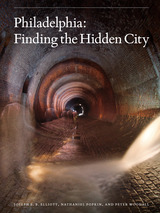
Philadelphia possesses an exceptionally large number of places that have almost disappeared—from workshops and factories to sporting clubs and societies, synagogues, churches, theaters, and railroad lines. In Philadelphia: Finding the Hidden City, urban observers Nathaniel Popkin and Peter Woodall uncover the contemporary essence of one of America’s oldest cities. Working with accomplished architectural photographer Joseph Elliott, they explore secret places in familiar locations, such as the Metropolitan Opera House on North Broad Street, the Divine Lorraine Hotel, Reading Railroad, Disston Saw Works in Tacony, and mysterious parts of City Hall.
Much of the real Philadelphia is concealed behind facades. Philadelphia artfully reveals its urban secrets. Rather than a nostalgic elegy to loss and urban decline, Philadelphia exposes the city’s vivid layers and living ruins. The authors connect Philadelphia’s idiosyncratic history, culture, and people to develop an alternative theory of American urbanism, and place the city in American urban history. The journey here is as much visual as it is literary; Joseph Elliott’s sumptuous photographs reveal the city's elemental beauty.
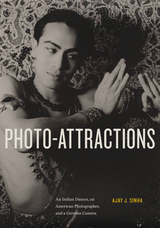
Art historian Ajay Sinha uses these hitherto unpublished photographs and archival research to raise provocative and important questions about photographic technology, colonial histories, race, sexuality and transcultural desires. Challenging the assumption that Gopal was merely objectified by Van Vechten’s Orientalist gaze, he explores the ways in which the Indian dancer co-authored the photos. In Sinha’s reading, Van Vechten’s New York studio becomes a promiscuous contact zone between world cultures, where a “photo-erotic” triangle is formed between the American photographer, Indian dancer, and German camera.
A groundbreaking study of global modernity, Photo-Attractions brings scholarship on American photography, literature, race and sexual economies into conversation with work on South Asian visual culture, dance, and gender. In these remarkable historical documents, it locates the pleasure taken in cultural difference that still resonates today.

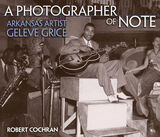
In a selection of more than one hundred black and white images taken over a period of sixty years, this book bears witness to the life of a remarkable photographer and to small-town African American life in the middle of the twentieth century. Geleve Grice was born and raised near Pine Bluff, and he has documented the ordinary life of his community: parades, graduations, weddings, club events, and whatever else brought people together. In the process he has created a remarkable historical portrait of an African American community. Through his lens we glimpse the daily patterns of segregated Pine Bluff, and we also participate in the excitement of greeting extraordinary visitors. Martin Luther King Jr., Mary McLeod Bethune, Harry S. Truman, and others all came through town.
Folklorist Robert Cochran worked with Grice to select these photographs from the thousands he has taken across a lifetime. They organized the work chronologically, reflecting Grice’s early years in small-town Arkansas, his travel as a serviceman in World War II, and his long career in Pine Bluff. Cochran’s accompanying chapters link Grice to the great tradition of American community photographers. He also shows how work for pay-at the Arkansas Agricultural, Mechanical and Normal College in Pine Bluff; at the Arkansas State Press daily newspaper; through his own studio-shaped Grice’s work. Cochran shows that Grice not only made his living taking photographs for jobs, but that he also made his own life by making photographs for himself-and now for history.

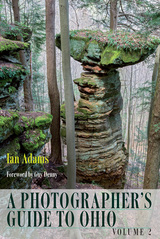


The Photographic Legacy of Frances Benjamin Johnston (1864–1952) draws on original papers and photographs from the Library of Congress to document the extraordinary life and nearly seventy-year career of this pioneering photographer. Maria Elizabeth Ausherman illuminates the early origins of Johnston’s style and vision, and her attempts to change society through her art. One of the first women to work in an emerging field dominated by men, Johnston achieved acclaim as an accomplished photographer and photojournalist.
As the official White House photographer for five administrations, she was instrumental in defining the medium and inspiring women to train in and appreciate photography. But it is her monumental nine-state survey of southern American architecture that stands as her most significant contribution to the history and development of photography both as art and as documentary. Through her photography, Johnston showed reverence for the beautiful historic buildings she appreciated and also helped shape architectural and photographic preservation in the United States.
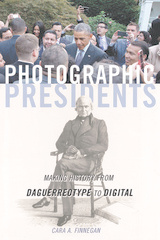
Lincoln’s somber portraits. Lyndon Johnson’s swearing in. George W. Bush’s reaction to learning about the 9/11 attacks. Photography plays an indelible role in how we remember and define American presidents. Throughout history, presidents have actively participated in all aspects of photography, not only by sitting for photos but by taking and consuming them. Cara A. Finnegan ventures from a newly-discovered daguerreotype of John Quincy Adams to Barack Obama’s selfies to tell the stories of how presidents have participated in the medium’s transformative moments. As she shows, technological developments not only changed photography, but introduced new visual values that influence how we judge an image. At the same time, presidential photographs—as representations of leaders who symbolized the nation—sparked public debate on these values and their implications.
An original journey through political history, Photographic Presidents reveals the intertwined evolution of an American institution and a medium that continues to define it.
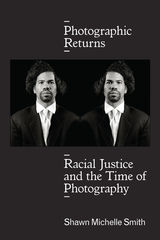
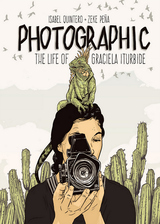
Renowned Mexican photographer Graciela Iturbide was born in Mexico City in 1942, the oldest of thirteen children. When tragedy strikes Graciela as a young mother, she turns to photography for solace and understanding.
From then on Graciela embarks on a photographic journey that takes her throughout her native Mexico, from the Sonora Desert to Juchitán to Frida Kahlo’s bathroom, and then to the United States, India, and beyond.
Photographic is a symbolic, poetic, and deeply personal graphic biography of this iconic photographer. Graciela’s journey will excite young adults and budding photographers, who will be inspired by her resolve, talent, and curiosity.
Ages twelve and up
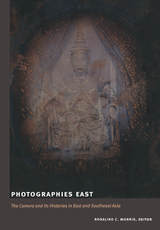
The contributors analyze how in specific cultural and historical contexts, the camera has affected experiences of time and subjectivity, practices of ritual and tradition, and understandings of death. They highlight the links between photography and power, looking at how the camera has figured in the operations of colonialism, the development of nationalism, the transformation of monarchy, and the militarization of violence. Moving beyond a consideration of historical function or effect, the contributors also explore the forms of illumination and revelation for which the camera has offered itself as instrument and symbol. And they trace the emergent forms of alienation and spectralization, as well as the new kinds of fetishism, that photography has brought in its wake. Taken together, the essays chart a bravely interdisciplinary path to visual studies, one that places the particular knowledge of a historicized anthropology in a comparative frame and in conversation with aesthetics and art history.
Contributors. James L. Hevia, Marilyn Ivy, Thomas LaMarre, Rosalind C. Morris, Nickola Pazderic, John Pemberton, Carlos Rojas, James T. Siegel, Patricia Spyer
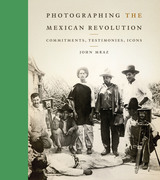
The Mexican Revolution of 1910–1920 is among the world’s most visually documented revolutions. Coinciding with the birth of filmmaking and the increased mobility offered by the reflex camera, it received extraordinary coverage by photographers and cineastes—commercial and amateur, national and international. Many images of the Revolution remain iconic to this day—Francisco Villa galloping toward the camera; Villa lolling in the presidential chair next to Emiliano Zapata; and Zapata standing stolidly in charro raiment with a carbine in one hand and the other hand on a sword, to mention only a few. But the identities of those who created the thousands of extant images of the Mexican Revolution, and what their purposes were, remain a huge puzzle because photographers constantly plagiarized each other’s images.
In this pathfinding book, acclaimed photography historian John Mraz carries out a monumental analysis of photographs produced during the Mexican Revolution, focusing primarily on those made by Mexicans, in order to discover who took the images and why, to what ends, with what intentions, and for whom. He explores how photographers expressed their commitments visually, what aesthetic strategies they employed, and which identifications and identities they forged. Mraz demonstrates that, contrary to the myth that Agustín Víctor Casasola was “the photographer of the Revolution,” there were many who covered the long civil war, including women. He shows that specific photographers can even be linked to the contending forces and reveals a pattern of commitment that has been little commented upon in previous studies (and completely unexplored in the photography of other revolutions).
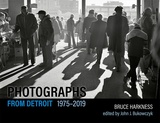
A retrospective survey of Bruce Harkness’s striking social documentary photographs and an invaluable historical record that bears witness to irrevocably lost swaths of Detroit’s social and urban fabric.
In 1980, the cities of Detroit and Hamtramck, Michigan, exercised eminent domain to develop nearly five hundred acres of land for a new industrial park and General Motors assembly plant. But the land was not vacant. Some thirty-five hundred people lived there in Poletown—some of them for their entire lives. They attended neighborhood schools and churches, worked for and patronized small businesses, walked the sidewalks, drove the streets, and tended to lawns and gardens. Harkness began photographing the area in February 1981. He recorded street scenes, intersections, panoramic views, homes, businesses, churches, and people. Ten months, ninety visits, and six hundred photographs later, it all disappeared forever.
The Poletown series established Harkness as a major Detroit documentarian. It came on the heels of late-1970s projects located in and around the city’s skid row: Cass Corridor. The images include gritty streetscapes, a portrait series depicting residents living in a crumbling apartment building, and the lively cultural milieu of a local gay and transgender bar. Most of this old portion of inner-city Detroit since has been supplanted by urban redevelopment and gentrification.
During the late 1980s, Harkness collaborated with urban historian John J. Bukowczyk on a major documentary project, Urban Interiors. While the Poletown project had documented the exteriors of buildings and streetscapes on Detroit’s East Side, Urban Interiors captured the insides of inner-city Detroit homes and businesses and included extended oral history interviews.
While Harkness has always found human dignity and resilience in his subjects, the tone of his work brightened in the 1990s alongside Detroit’s revival. Photographs from this era include blues musicians performing in clubs and at outdoor concerts and the distinctive, robust youth culture that flourished in Dearborn’s now-defunct Zone Coffee House.
Featuring images from these and other projects, Photographs from Detroit, 1975–2019 includes Harkness’s extensive notes, which describe and contextualize the encounters he shared with the people and places he photographed, and offer insight into his working methods and equipment. The volume and quality of Harkness’s work merits him recognition as one of Detroit’s most important documentary photographers during this pivotal, transitional era in the city’s history.
Harkness’s images depict the struggles and resilience of ordinary individuals and families in working-class communities who together have indelibly shaped the spirit of Detroit. This book is a must-have for Detroiters past and present as well as historians, anthropologists, social documentary advocates, and photobook collectors everywhere.
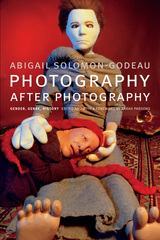
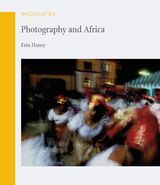
A land comprising more than fifty nations and innumerable cultural and geographic variations, from harsh desert to lush jungle, Africa has long been a favorite subject for photographers. Since the advent of the medium in the first half of the nineteenth century, a myriad of photographers—both indigenous and immigrant, amateur and professional, explorer and colonist, naturalist and artist—have recorded intrepid expeditions, documented flora and fauna, and chronicled the transformations of the cultural landscape.
Photography and Africa investigates the many themes that intertwine the photographs with the circumstances of their creation. Presenting a wealth of astonishing and rare images, Erin Haney brings together some of the most vibrant examples captured in the continent. From royal portraiture in the nineteenth-century Cape Coast to staged vignettes of old Cairo streets to apartheid-era South African resistance photography, this book illustrates the fascinating and long-standing relationship between Africa and the photograph.
A powerful and celebratory insight into Africa’s relationship with the photograph, Photography and Africa will appeal to those interested in the photography and culture of Africa and how the two have interacted and informed each other over time.
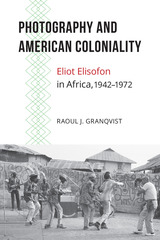
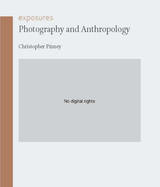
In Photography and Anthropology, Christopher Pinney presents a provocative and readable account of the strikingly parallel histories of the two disciplines, as well as a polemical narrative and overview of the use of photography by anthropologists from the 1840s to the present. Walter Benjamin suggested that photography “make[s] the difference between technology and magic visible as a thoroughly historical variable,” and Pinney here explores photography as a divinatory practice that prompted anthropologists to capture the “primitive” lives of those they studied.
Early anthropology celebrated photography as a physical record, whose authority and permanence promised an escape from the lack of certainty in speech. But later anthropologists faulted photography for failing to capture movement and process. Anthropology as a practice of “being there” has thus found itself entwined in an intimate engagement with photography as metaphor for the collection of evidence.
Through numerous examples from the annals of anthropological photography, Photography and Anthropology examines the history of anthropology’s enchantment with photography alongside the anthropological theory of photography and documentation.
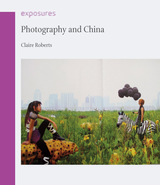
With its lush and diverse landscapes, ancient ruins, and stunning architecture, China is a photographer’s dream. Exploring this visually rich and evocative country, Photography and China highlights Chinese photographers and subjects from the inception of photography to the present day.

What did the arrival of cinema do for photography? How did the moving image change our relation to the still image? Why have cinema and photography been so drawn to each other? Close-ups, freeze frames and the countless portrayals of photographers on screen are signs of cinema’s enduring attraction to the still image. Photo-stories, sequences and staged tableaux speak of the deep influence of cinema on photography.
Photography and Cinema a considers the importance of the still image for filmmakers such as the Lumière brothers, Alfred Hitchcock, Michelangelo Antonioni, Jean-Luc Godard, Chris Marker, Mark Lewis, Agnès Varda, Peter Weir, Christopher Nolan and many others. In parallel it looks at the cinematic in the work of photographers and artists that include Germaine Krull, William Klein, John Baldessari, Jeff Wall, Victor Burgin and Cindy Sherman.
From film stills and flipbooks to slide shows and digital imaging, hybrid visual forms have established an ambiguous realm between motion and stillness. David Campany assembles a missing history in which photography and cinema have been each other’s muse and inspiration for over a century.

The idea of photographing the dead is as old as photography itself. For the most part, early death photographs were commissioned or taken by relatives of the deceased and preserved in the home as part of the family collection. Once thought inappropriate and macabre, today these photographs are considered to have a beneficial role in bereavement therapy.
Photography and Death reveals the beauty and significance of such images, formerly dismissed as disturbing or grotesque, and places them within the context of changing cultural attitudes towards death and loss. Excluding images of death through war, violence, or natural disasters, Audrey Linkman concentrates on photographs of natural deaths within the family. She identifies the range of death-related photographs that have been produced in both Europe and North America since the 1840s and charts changes in their treatment through the decades.
Photography and Death will interest photo, art, and social historians and practitioners in the field of bereavement therapy, as well as those who wish to better understand the images of long-lost ancestors who gaze back from the pages of family albums.
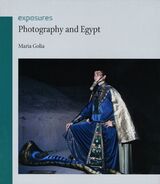
Egypt immediately conjures images of the pyramids, the temples and the Sphinx in the desert. Early photographs of Egypt took these ancient monuments as their primary subjects, and these have remained hugely influential in constructing our view of the country. But while Egypt and its monuments have been regularly photographed by foreigners, little has been known about the early days of photography among Egyptians. Photography and Egypt examines both, considering images from the mid-nineteenth century to the present day, including studio portraits, landscapes and photojournalism.
Two forces drove photography’s early development in Egypt: its link as an essential tool of archaeology and the accelerating effects of archaeological photographs on the burgeoning tourism industry. In this book, Maria Golia examines these twin drives, through the work of Europeans who travelled to Egypt as well as early Egyptian and Middle Eastern photographers. Golia examines how photography was also employed for propaganda purposes, including depictions of celebrated soldiers, workers and farmers; and how studio-based photography was used to portray the growing Egyptian middle class. Today’s young photographic artists, Golia reveals, use the medium to celebrate everyday life and to indict political and social conditions, with photography bearing witness to history––as well as helping to shape it.
Illustrated with a rich, sometimes surprising variety of images, many published for the first time in the West, Photography and Egypt is the first book to relate the story of Egypt’s rapport with photography in one concise and highly readable account.
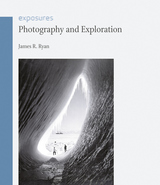
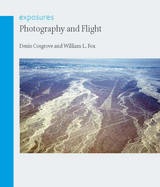
Aerial photography is marked by its dependency on technological developments in both photography and aerospace, and the authors chart the history of this photography as it tracked the evolution of these technologies. Beginning with early images taken from hot-air balloons, fixed platforms, and subsequent handheld camera technology, Denis Cosgrove and William Fox then explain how military reconnaissance and governmental projects were instrumental in catalyzing these and other innovations in the field. They examine pivotal historical moments in which aerial photography began to establish itself as essential tool, such as in World War II military strategies, high-altitude photography taken from postwar rockets and aircraft, and the use of aerial photography during the cold war and the Cuban Missile Crisis. The book also explores the advancement of geographic scholarship through aerial photography, ranging from military excursions into Antarctica to the images of the curvature of the earth taken during the Apollo space missions.
While digital technology and remote sensing have changed the landscape of photography, Photography and Flight argues that they have not diminished the significance of aerial photography in providing images of the earth. Rather, new technologies and resulting innovations such as Google Earth have enabled the mass democratization of access to such information. Photography and Flight ultimately reveals how the camera lens from far away continues to unearth telling details about the land and those who live upon it.
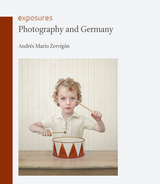
Andrés Mario Zervigón covers this history from the region’s pre-photographic experiments with light-sensitive chemicals to today’s tension between analog and digital technologies. Rather than simply providing a survey of German photography, however, he focuses on how the medium, as a product of the modern age, has intervened in a fraught project of national imagining, often to productive ends but sometimes to catastrophic results. Richly illustrated with numerous previously unpublished images, Photography and Germany is the first single-authored history of photography in Germany ever published, one that deepens our broader understanding of how photography cultivates notions of a nation and its inhabitants.
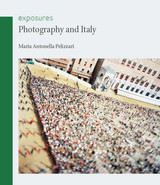
In this beautifully illustrated book Maria Antonella Pelizzari traces the history of photography in Italy from its beginnings to the present as she guides us through the history of Italy and its ancient sites and Renaissance landmarks.
Pelizzari specifically considers the role of photography in the formation of Italian national identity during times of political struggle, such as the lead up to Unification in 1860, and later in the nationalist wars of Mussolini’s regime. While many Italians and foreigners— such as Fratelli Alinari or Carlo Ponti, John Ruskin or Kit Talbot—focused their lenses on architectural masterpieces, others documented the changing times and political heroes, creating icons of figures such as Garibaldi and the brigands. Pelizzari’s exploration of Italian visual traditions also includes the photographic collages of Bruno Munari, the neorealist work of photographers such as Franco Pinna, the bold stylized compositions of Mario Giacomelli, and the controversial images created by Oliviero Toscani for Benetton advertising in the 1980s.
Featuring unpublished works and a rare selection of over one hundred images, this book will appeal to art collectors and students of art history and Italian culture.

In Photography and Japan, Karen Fraser argues that the diversity of styles, subjects, and functions of Japanese photography precludes easy categorization along nationalized lines. Instead, she shows that the development of photography within Japan is best understood by examining its close relationship with the country’s dramatic cultural, political, and social history.
Photography and Japan covers 150 years of photography, a period in which Japan has experienced some of the most significant events in modern history and made a remarkable transformation from an isolated, feudal country into an industrialized, modern world power—a transformation that included a striking rise and fall as an imperial power during the first half of the twentieth century and a miraculous economic recovery in the decades following the devastation of World War II. The history of photography has paralleled these events, becoming inextricably linked with notions of modernity and cultural change.
Through thematic chapters that focus on photography’s role in negotiating cultural identity, war, and the documentation of urban life, Photography and Japan introduces many images that will be unfamiliar to Western viewers and provides a broadened context for those photos that are better known.

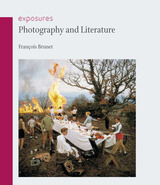
Aspiring writers are often admonished to “show, not tell,” an instruction that immediately speaks to the relationship between the written word and the visual world. It is a tenuous correspondence—both literature and art are striving toward the same goal of depiction, but the reality they portray is shaped by their chosen tools. As François Brunet argues in Photography and Literature, the advent of photography posed one of the greatest challenges to writers—here was an artistic medium that could almost instantly distill a scene or perspective. As Brunet shows, the result of this challenge has been a fantastic interplay between the two and between photographers and writers themselves.
Photography and Literature assess the complete history of photography, and Brunet begins by examining how the invention of photography was shaped by written culture, both scientific and literary. As well, Brunet looks at the creation of the photo-book, the frequent personal discovery of photography by writers, and how photography and literature eventually began to trade tools and merge formats to create a new photo-textual genre. Highly illustrated, Photography and Literature reflects a photographer’s point of view, giving new attention to such works as the groundbreaking exploration of photography in The Pencil of Nature by William Henry Fox Talbot and Sophie Calle’s projects with Jean Baudrillard and Paul Auster.
Essential for anyone interested in the intersection of the verbal and the visual, Photography and Literature provides a fascinating wealth of autobiography, manifesto, and fiction as well as a variety of images from the first daguerreotypes to the digital age.
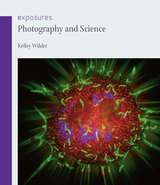
Kelley Wilder draws upon her extensive background in alternative process photography, museum practice, art history, and history of science to produce a wide-ranging and illuminating investigation into the intersection of photography and science. Photography and Science describes how photography first established its legitimacy through its close association with key scientific ideas and practices, such as objectivity, observation, archiving, and experimentation. Wilder then charts how photography returned the favor by serving as a powerful influence in various scientific disciplines, such as biology and astronomy. The book digs into the controversial debates over photography’s “success” in the sciences, its use in practical fields such as medical imaging and x-raying, and the complicated relationship between scientific theory and art practice.
Augmenting this fascinating study are eighty photographs of scientific subjects and experiments, many of which are published here for the first time. A thought-provoking, broad-based examination, Photography and Science will be an essential addition to the bookshelves of scientists, photographers, and art historians alike.
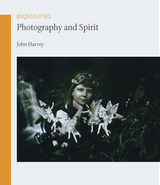
Can film capture what our eyes can’t see? There are many examples—both historical and contemporary—of photographs of spirits or “ghosts.” These images alternately have been derided as hoaxes or, at the other extreme, held up as irrefutable proof of the otherworld. Photography and Spirit examines these mesmerizing images of phantoms, psychical emanations, and religious apparitions.
Drawing upon eighty images taken between 1860 and today, John Harvey explores spirit photography from the various perspectives of religion, science, and art. Some of the photographs he considers were taken by scientists, others by amateur and commercial photographers, and still others by robotic surveillance devices. The diverse origins of the spirit photographs have inspired a multiplicity of interpretations and engendered, in some cases, high levels of skepticism. Harvey’s analysis probes the connections between the images, human imagination, and larger cultural traditions. Photography and Spirit transforms what are often fringe objects of kitsch into revelatory artifacts of cultural history, drawing from them thought-provoking insights into the historical connections between the material and spiritual worlds, representations of grief, and human cultures’ enduring fascination with the supernatural.
Photo images of ethereal spirits render the border between what is real and what is fantastic indistinguishable. Photography and Spirit challenges our pre-conceived notions and offers an intriguing new perspective on the nature of photography.
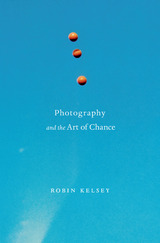
Photography has a unique relationship to chance. Anyone who has wielded a camera has taken a picture ruined by an ill-timed blink or enhanced by an unexpected gesture or expression. Although this proneness to chance may amuse the casual photographer, Robin Kelsey points out that historically it has been a mixed blessing for those seeking to make photographic art. On the one hand, it has weakened the bond between maker and picture, calling into question what a photograph can be said to say. On the other hand, it has given photography an extraordinary capacity to represent the unpredictable dynamism of modern life. By delving into these matters, Photography and the Art of Chance transforms our understanding of photography and the work of some of its most brilliant practitioners.
The effort to make photographic art has involved a call and response across generations. From the introduction of photography in 1839 to the end of the analog era, practitioners such as William Henry Fox Talbot, Julia Margaret Cameron, Alfred Stieglitz, Frederick Sommer, and John Baldessari built upon and critiqued one another’s work in their struggle to reconcile aesthetic aspiration and mechanical process. The root problem was the technology’s indifference, its insistence on giving a bucket the same attention as a bishop and capturing whatever wandered before the lens. Could such an automatic mechanism accommodate imagination? Could it make art? Photography and the Art of Chance reveals how daring innovators expanded the aesthetic limits of photography to create art for a modern world.
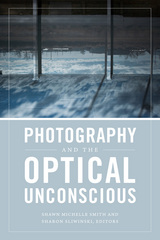
Contributors. Mary Bergstein, Jonathan Fardy, Kristan Horton, Terri Kapsalis, Sarah Kofman, Elisabeth Lebovici, Zoe Leonard, Gabrielle Moser, Mignon Nixon, Thy Phu, Mark Reinhardt, Shawn Michelle Smith, Sharon Sliwinski, Laura Wexler, Kelly Wood, Andrés Mario Zervigón
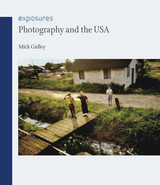
From Ansel Adams to Carleton Watkins, Diane Arbus to Weegee, Richard Avedon to James VanDerZee, American photographers have recorded their vast, multicultural nation in images that, for more than a hundred years, have come to define the USA. In Photography and the USA, Mick Gidley explores not only the medium of photography and the efforts to capture key events and moments through photographs, but also the many ways in which the medium has played a formative role in American culture.
Photography and the USA encompasses the major movements, figures and works that are crucial to understanding American photography, but also pays attention to more obscure aspects of photography’s history. Focusing on works that reveal many different facets of America, its landscapes and its people, Gidley explores the ambiguities of American history and culture. We encounter images that range from an anti-lynching demo in 1934 to Dorothea Lange’s poster “All races serve the crops in California;” an early photographic view of Niagara Falls against the painstaking detail of Edward Weston’s Pepper, No. 30; a fireman’s fight in the San Francisco earthquake of 1906 to the Ground Zero images of 2001 by Joel Meyerowitz; an 1890s “Wanted” image to Elliot Erwitt’s shot of the Nixon–Kruschchev “Kitchen Debate.” Organizing his narrative around the themes of history, technology, the document and the emblem, Mick Gidley not only presents a history of photography, but also reveals the complexities inherent in reading photographs themselves.
A concise yet comprehensive overview of photography in the United States, this book is an excellent introduction to the subject for American Studies or visual arts students, or for anyone interested in US history or culture.
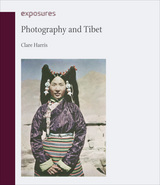
Harris combines extensive research in museums and archives with her own fieldwork in Tibetan communities to present materials that have never been examined before—including the earliest known photograph taken in Tibet, dating to 1863. She looks at the experimental camera-work of Tibetan monks—including the thirteenth Dalai Lama—and the creations of contemporary Tibetan photographers and artists. With every image she explores the complex religious, political, and cultural climate in which it was produced. Stunningly illustrated, this book will appeal to anyone interested in the dramatic history of Tibet since the mid-nineteenth century and its unique entanglements with aesthetics and modernity.

Contributors: Siobhan Angus, Ian Bourland, Oliver Coates, Kevin Coleman, Clare Corbould, Adrian De Leon, Rick Halpern, Daniel James, Tong Lam, Walter Benn Michaels, Jessica Stites Mor, Carol Quirke, Jayeeta Sharma, Erica Toffoli, Daniel Zamora
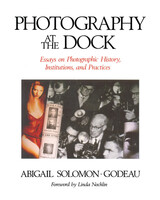


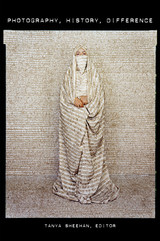
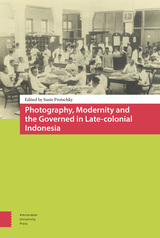


Drawing on entirely new material Eugenia Parry Janis fully analyzes the life and work of Le Gray and demonstrates the originality of his artistic achievement in the context of discoveries about his personal and professional history. Janis, approaching the photographs of Le Gray with the methods and sensibilities of an art historian, reveals telling connections between Le Gray's choices of subject matter and formal means of presentation and the existing pictorial practice of other media such as painting. This same approach makes her sensitive to Le Gray's departures from such traditional practice, and she skillfully illustrates how he evolved from student painter into master photographer. In doing so she gives us a glimpse of the way in which Le Gray's manipulation of the photographic process was always informed by his pictorial needs and by his developing style.
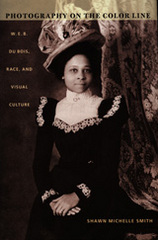
Smith reads Du Bois’s photographs in relation to other turn-of-the-century images such as scientific typologies, criminal mugshots, racist caricatures, and lynching photographs. By juxtaposing these images with reproductions from Du Bois’s exhibition archive, Smith shows how Du Bois deliberately challenged racist representations of African Americans. Emphasizing the importance of comparing multiple visual archives, Photography on the Color Line reinvigorates understandings of the stakes of representation and the fundamental connections between race and visual culture in the United States.
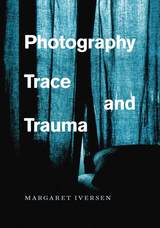
Examining photography and film, molds, rubbings, and more, Margaret Iversen considers how these artistic processes can be understood as presenting or simulating a residue, trace, or “index” of a traumatic event. These approaches, which involve close physical contact or the short-circuiting of artistic agency, are favored by artists who wish to convey the disorienting effect and elusive character of trauma. Informing the work of a number of contemporary artists—including Tacita Dean, Jasper Johns, Mary Kelly, Gabriel Orozco, and Gerhard Richter—the concept of the trace is shown to be vital for any account of the aesthetics of trauma; it has left an indelible mark on the history of photography and art as a whole.
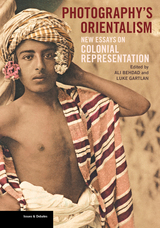
The Middle East played a critical role in the development of photography as a new technology and an art form. Likewise, photography was instrumental in cultivating and maintaining Europe’s distinctively Orientalist vision of the Middle East. As new advances enhanced the versatility of the medium, nineteenth-century photographers were able to mass-produce images to incite and satisfy the demands of the region’s burgeoning tourist industry and the appetites of armchair travelers in Europe. In this way, the evolution of modern photography fueled an interest in visual contact with the rest of the world.
Photography’s Orientalism offers the first in-depth cultural study of the works of European and non- European photographers active in the Middle East and India, focusing on the relationship between photographic, literary, and historical representations of this region and beyond. The essays explore the relationship between art and politics by considering the connection between the European presence there and aesthetic representations produced by traveling and resident photographers, thereby contributing to how the history of photography is understood.
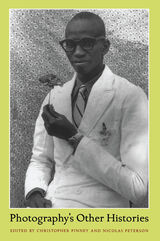
Richly illustrated with over 100 images, Photography’s Other Histories explores from a variety of regional, cultural, and historical perspectives the role of photography in raising historical consciousness. It includes two first-person pieces by indigenous Australians and one by a Seminole/Muskogee/Dine' artist. Some of the essays analyze representations of colonial subjects—from the limited ways Westerners have depicted Navajos to Japanese photos recording the occupation of Manchuria to the changing "contract" between Aboriginal subjects and photographers. Other essays highlight the visionary quality of much popular photography. Case studies centered in early-twentieth-century Peru and contemporary India, Kenya, and Nigeria chronicle the diverse practices that have flourished in postcolonial societies. Photography’s Other Histories recasts popular photography around the world, as not simply reproducing culture but creating it.
Contributors. Michael Aird, Heike Behrend, Jo-Anne Driessens, James Faris, Morris Low, Nicolas Peterson, Christopher Pinney, Roslyn Poignant, Deborah Poole, Stephen Sprague, Hulleah Tsinhnahjinnie, Christopher Wright
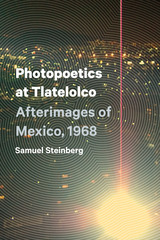
In the months leading up to the 1968 Olympic games in Mexico City, students took to the streets, calling for greater democratization and decrying crackdowns on political resistance by the ruling PRI party. During a mass meeting held at the Plaza of the Three Cultures in the Tlatelolco neighborhood, paramilitary forces opened fire on the gathering. The death toll from the massacre remains a contested number, ranging from an official count in the dozens to estimates in the hundreds by journalists and scholars. Rereading the legacy of this tragedy through diverse artistic-political interventions across the decades, Photopoetics at Tlatelolco explores the state’s dual repression—both the massacre’s crushing effects on the movement and the manipulation of cultural discourse and political thought in the aftermath.
Examining artifacts ranging from documentary photography and testimony to poetry, essays, chronicles, cinema, literary texts, video, and performance, Samuel Steinberg considers the broad photographic and photopoetic nature of modern witnessing as well as the specific elements of light (gunfire, flares, camera flashes) that ultimately defined the massacre. Steinberg also demonstrates the ways in which the labels of “massacre” and “sacrifice” inform contemporary perceptions of the state’s blatant and violent repression of unrest. With implications for similar processes throughout the rest of Latin America from the 1960s to the present day, Photopoetics at Tlatelolco provides a powerful new model for understanding the intersection of political history and cultural memory.
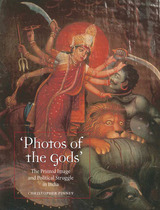
Drawing on years of archival research, interviews with artists and publishers, and the ethnographic study of their rural consumers, Christopher Pinney traces the intimate connections between the production and consumption of these images and the struggle against colonial rule. The detailed output of individual presses and artists is set against the intensification of the nationalist struggle, the constraints imposed by colonial state censorship, and fifty years of Indian independence. The reader is introduced to artists who trained within colonial art schools, others whose skills reflect their membership of traditional painting castes, and yet others who are self-taught former sign painters.
Photos of the Gods is the first comprehensive history of India’s popular visual culture. Combining anthropology, political and cultural history, and the study of aesthetic systems, and using many intriguing and unfamiliar images, the book shows that the current predicament of India cannot be understood without taking into account this complex, fascinating, and until now virtually unseen, visual history.
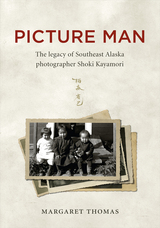
In Picture Man, Margaret Thomas views Kayamori’s life through multiple lenses. Using Kayamori’s original photos, she explores the economic and political realities that sent Kayamori and thousands like him out of Japan toward opportunity and adventure in the United States, especially the Pacific Northwest. She reveals the tensions around Asian immigrants on the West Coast and the racism that sent many young men north to work in the canneries of Alaska. And she illuminates the intersecting—and at times conflicting—lives of villagers and migrants in a time of enormous change. Part history, part biography, part photographic showcase, Picture Man offers a fascinating new view of Alaska history.
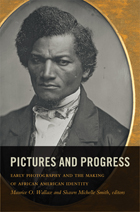
Contributors. Michael A. Chaney, Cheryl Finley, P. Gabrielle Foreman, Ginger Hill, Leigh Raiford, Augusta Rohrbach, Ray Sapirstein, Suzanne N. Schneider, Shawn Michelle Smith, Laura Wexler, Maurice O. Wallace
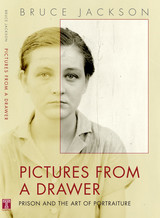
For more than forty years Bruce Jackson has been documenting—in books, photographs, audio recording, and film—inmates’ lives in American prisons. In November, 1975, he acquired a collection of old ID photos while he was visiting the Cummins Unit, a state prison farm in Arkansas. They are published together for the first time in this remarkable book.
The 121 images that appear here were likely taken between 1915 and 1940. As Jackson describes in an absorbing introduction, the function of these photos was not portraiture—their function was to “fold a person into the controlled space of a dossier.” Here, freed from their prison “jackets,” and printed at sizes far larger than their originals, these one-time ID photos have now become portraits. Jackson’s restoration transforms what were small bureaucratic artifacts into moving images of real men and women.
Pictures from a Drawer also contains an extraordinary description of everyday life at Cummins prison in the 1950s, written originally by hand and presented to Jackson in 1973 by its author, a long-time inmate.
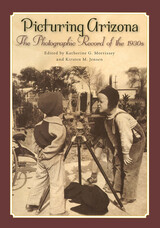
This book places the work of local Arizonans alongside that of federal photographers both to illuminate the impact of the Depression on the state’s distinctive racial and natural landscapes and to show the influence of differing cultural agendas on the photographic record. The more than one hundred images—by well-known photographers such as Dorothea Lange and Laura Gilpin as well as by an array of less familiar photographers—represent a variety of purposes and perspectives, from public to personal, political to promotional. Six essays and three photo-essays bring together prominent authorities in history, the arts, and other fields who provide diverse perspectives on this period in Arizona and American history. Viewed together, the words and images capture a Depression-era Arizona bustling with activity as federally funded construction projects and seasonal agricultural jobs brought migrants and newcomers to the state. They convey the celebrations and the struggles of commercial photographers, archaeologists, city folks, farmers, tourists, native peoples and others in these hard times.
As the economic strains of the decade reverberated through the state, local photographers documented the lives of Arizona residents—including those frequently overlooked by historians. As this book persuasively shows, photographs can conceal as much as they reveal. A young Mexican American girl stands in front of a backdrop that hides the outhouse behind her, a deeply moving image for what it suggests about the efforts of her family to conceal their economic circumstances. Yet this image is a perfect metaphor for all the photographs in this book: stories remain hidden, but when viewers begin to question what they cannot see, pictures resonate more loudly than ever before.
This book is a history of Arizona written from the photographic record, offering a point of view that may differ from the written record. From the images and the insights of the authors, we can gain a new appreciation of how one state—and its indomitable people—weathered our nation’s toughest times.
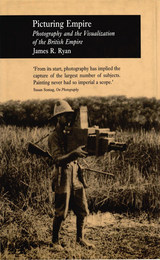
But as James R. Ryan argues in Picturing Empire, Victorian photographs reveal as much about the imaginative landscapes of imperial culture as they do about the "real" subjects captured within their frames. Ryan considers the role of photography in the exploration and domestication of foreign landscapes, in imperial warfare, in the survey and classification of "racial types," in "hunting with the camera," and in teaching imperial geography to British schoolchildren.
Ryan's careful exposure of the reciprocal relation between photographic image and imperial imagination will interest all those concerned with the cultural history of the British Empire.

But as James R. Ryan argues in Picturing Empire, Victorian photographs reveal as much about the imaginative landscapes of imperial culture as they do about the "real" subjects captured within their frames. Ryan considers the role of photography in the exploration and domestication of foreign landscapes, in imperial warfare, in the survey and classification of "racial types," in "hunting with the camera," and in teaching imperial geography to British schoolchildren.
Ryan's careful exposure of the reciprocal relation between photographic image and imperial imagination will interest all those concerned with the cultural history of the British Empire.

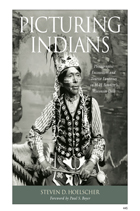
Winner, Book Award of Merit, Wisconsin Historical Society, Best Books for General Audiences, selected by the American Association of School Librarians, and Best Books for Regional Interests, selected by the Public Library Association
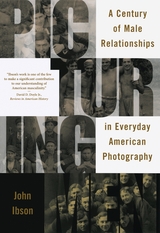
Such is the time John Ibson evokes in Picturing Men, a striking visual record of changes in attitudes about relationships between gentlemen, soldiers, cowboys, students, lumberjacks, sailors, and practical jokers. Spanning from 1850 to 1950, the 142 everyday photographs that richly illustrate Picturing Men radiate playfulness, humor, and warmth. They portray a lost world for American men: a time when their relationships with each other were more intimate than they commonly are today, regardless of sexual orientation. Picturing Men starkly contrasts the calm affection displayed in earlier photographs with the absence of intimacy in photos from the mid-1950s on. In doing so, this lively, accessible book makes a significant contribution to American history and cultural studies, gender studies, and the history of photography.
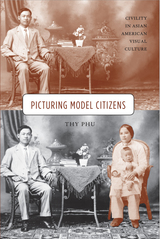
At the heart of the model minority myth—often associated with Asian Americans—is the concept of civility. In this groundbreaking book, Picturing Model Citizens, Thy Phu exposes the complex links between civility and citizenship, and argues that civility plays a crucial role in constructing Asian American citizenship.
Featuring works by Arnold Genthe, Carl Iwasaki, Toyo Miyatake, Nick Ut, and others, Picturing Model Citizens traces the trope of civility from the nineteenth to the twenty-first centuries. Through an examination of photographs of Chinese immigrants, Japanese internment camps, the Hiroshima Maidens project, napalm victims, and the SARS epidemic, Phu explores civility's unexpected appearance in images that draw on discourses of intimacy, cultivation, apology, and hygiene. She reveals how Asian American visual culture illustrates not only cultural ideas of civility, but also contests the contradictions of state-defined citizenship.
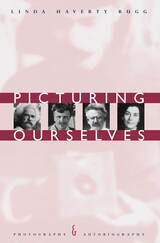
Rugg tracks photography's impact on the formation of self-image through the study of four literary autobiographers concerned with the transformative power of photography. Obsessed with self-image, Mark Twain and August Strindberg both attempted (unsuccessfully) to integrate photographs into their autobiographies. While Twain encouraged photographers, he was wary of fakery and kept a fierce watch on the distribution of his photographic image. Strindberg, believing that photographs had occult power, preferred to photograph himself.
Because of their experiences under National Socialism, Walter Benjamin and Christa Wolf feared the dangerously objectifying power of photographs and omitted them from their autobiographical writings. Yet Benjamin used them in his photographic conception of history, which had its testing ground in his often-ignored Berliner Kindheit um 1900. And Christa Wolf's narrator in Patterns of Childhood attempts to reclaim her childhood from the Nazis by reconstructing mental images of lost family photographs.
Confronted with multiple and conflicting images of themselves, all four of these writers are torn between the knowledge that texts, photographs, and indeed selves are haunted by undecidability and the desire for the returned glance of a single self.
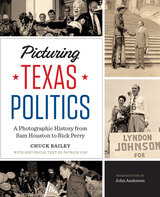
With rare, previously unpublished photographs and iconic images of politicians from the state’s founders to Ann Richards, George W. Bush, and Rick Perry, here is the first-ever photographic album of Texas politicians and political campaigns.
The Republic of Texas was founded in 1839, around the time that photography was being invented. So while there were no photographers at the Alamo or San Jacinto, they arrived soon after to immortalize, on film, Sam Houston, David Burnett, Mirabeau Lamar, and many other founding fathers of the Lone Star State. Over the following nearly two centuries, Texas politics and politicians have provided reliable, often dramatic, and sometimes larger-than-life subjects for photographers to capture in the moment and add to the historical record.
Picturing Texas Politics presents the first photographic album of Texas politicians and political campaigns ever assembled. Chuck Bailey has searched archives, museums, libraries, and private collections to find photographs that have never been published, as well as iconic images, such as Russell Lee’s pictures of one of Ralph Yarborough’s campaigns. These photographs are arranged into four chronological sections, each one introduced by historian Patrick Cox, who also provides informative photo captions. The photographs display power and political savvy from the early Republic to Lyndon Johnson and Bob Bullock; unmatched dedication to Texas in the Hobby and Bush families; and the growing influence of women in politics, from Miriam “Ma” Ferguson to Barbara Jordan, Ann Richards, and Kay Bailey Hutchison. With Sam Houston’s jaguar vest, W. Lee “Pappy” O’Daniel’s hillbilly band, a famous governor with an ostrich, and prominent Texans eating watermelons, shooting guns, and riding horses, this is Texas politics at its liveliest and best.

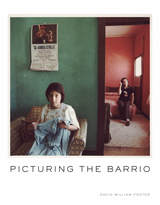

Kohonen ably examines each image, elucidating how visual media helped to anchor otherwise abstract political and intellectual concepts of the future and modernization within the Soviet Union. The USSR mapped and named the cosmos, using new media to stake a claim to this new territory and incorporating it into the daily lives of its citizens. Soviet cosmonauts, meanwhile, were depicted as prototypes of the perfect Communist man, representing modernity, good taste, and the aesthetics of the everyday. Across five heavily illustrated chapters, Picturing the Cosmos navigates and critically examines these utopian narratives, highlighting the rhetorical tension between propaganda, censorship, art, and politics.
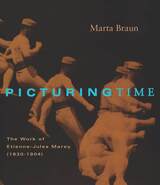
Braun offers a fascinating look at how Marey's chronophotography was used to express the profound transformation in understanding and experiencing time that occurred in the late nineteenth century. Featuring 335 illustrations, Picturing Time includes many unpublished examples of Marey's chronophotographs and cinematic work. It also contains a complete bibliography of his writings and the first catalog of his films, photographic prints, and recently discovered negatives.

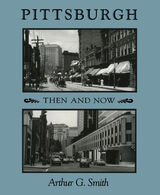
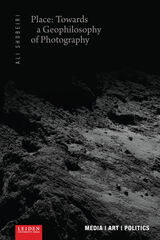
Drawing on theoretical insights from geography and philosophy, Ali Shobeiri examines how six fundamentals of photography—the photographer, camera, photograph, image, spectator, and genre—manifest unique, contingent notions of “place.” The geophilosophy that emerges offers a new language for understanding how “place” encapsulates everything that invites and resists location, identity, story, function, and meaning.

Mavor’s original approach to these photographs emphatically sees sexuality where it has been previously rendered invisible. She insists that the sexuality of the girls in Carroll’s pictures is not only present, but deserves recognition, respect, and scrutiny. Similarly, she sees in Cameron’s photographs of sensual Madonnas surprising visions of motherhood that outstrip both Victorian and contemporary understandings of the maternal as untouchable and inviolate, without sexuality. Finally she shows how Hannah Cullwick, posing in various masquerades for her secret paramour, emerges as a subject with desires rather than simply a victim of her upper-class partner. Even when confronting the darker areas of these photographs, Mavor perseveres in her insistence on the pleasures taken—by the viewer, the photographer, and often by the model herself—in the act of imagining these sexualities. Inspired by Roland Barthes, and drawing on other theorists such as Julia Kristeva and Luce Irigaray, Mavor creates a text that is at once interdisciplinary, personal, and profoundly pleasurable.

The Poetics and Politics of the Veil in Iran features Fatehrad’s own photographs in addition to work by artists Hengameh Golestan, Shirin Neshat, Shadi Ghadirian, Abbas Kiarostami, Mohsen Makhmalbaf, Adolf Loos, Gaëtan Gatian de Clérambault, and Alison Watt. In exploring women’s lives in post-revolutionary Iran, Fatehrad considers the role of the found image and the relationship between the archive and the present, resulting in an illuminating history of feminism in Iran in the twentieth and twenty-first centuries.

"Polka Heartland" captures the beat that pulses in the heart of Midwestern culture--the polka--and offers up the fascinating history of how "oompah-pah" came to be the sound of middle America. From the crowded dance tent at Pulaski Polka Days to an off-the-grid Mexican polka dance in small-town Wisconsin, "Polka Heartland" explores the people, places, and history behind the Midwest's favorite music.
From polka's surprising origin story as a cutting-edge European fad to an exploration of the modern-day polka scene, author Rick March and photographer Dick Blau take readers on a joyful romp through this beloved, unique, and richly storied genre. "Polka Heartland" describes the artists, venues, instruments, and music-makers who have been pivotal to polka's popularity across the Midwest and offers six full-color photo galleries to immerse readers in today's vibrant polka scene.

In stunning full-color images, employing the latest photographic techniques, esteemed photographer Heather Angel has captures the intimate interactions of plants with their floral pollinators. The plants come not only from Angel’s Surrey backyard and the Royal Botanic Garden at Kew, but from twenty countries where Angel has travelled—from the rich floral kingdoms of the Cape of South Africa to the diversity of China and the Americas. The photos illustrate the varied techniques that flowers use to communicate with their pollinators. Some, for example, change color when the flower no longer has rewards to offer. Others control precisely when pollinators enter or leave by timing when they open and close their petals or when they emit a scent. This fascinating array of pollination repertoires crossfertilizes Angel’s photos with a descriptive text.
Featuring both common and exotic plants and temperate and tropical floral, Pollination Power will entice anyone with a passion for botanicals, from gardeners to botanists alike.
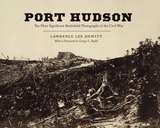
In 1978, Lawrence Lee Hewitt became the first manager of the Port Hudson State Historic Site. There, he began collecting photographs related to the Civil War battle. Carefully analyzing a vast and remarkable photographic record of Port Hudson, Hewitt has now brought his four decades of research and collecting together in this book. The quantity, diversity, and in some cases uniqueness of these photos help widen our perspective not only on Port Hudson and the Civil War’s impact on its people and environment, but also on the history of photography.
Together the six cameramen claimed many “firsts,” including the first-ever photograph of soldiers engaged in battle, first exterior shots at night, and first “composition print.” The collection—arranged chronologically—allows readers to follow the changes in the landscape during and after the siege. The sheer range of subjects represented is impressive. A cotton gin, a grist mill, and a Methodist church—all showing signs of damage—caught the eyes of photographers. At the request of a Union soldier’s mother, there was a photograph taken of his burial site. There is even the only known photograph of a Confederate army surrendering. Biographies of the photographers and the captions in this volume also brim with fresh information about both the photographs and the campaign, attesting to the author’s meticulous scholarship and skilled analysis.
Though Port Hudson may never receive the level of attention of Gettysburg or Vicksburg, this well-conceived collection of photographs will make those with a serious interest in the conflict or photography not only reexamine Port Hudson but also the importance of the Civil War’s photographic record.
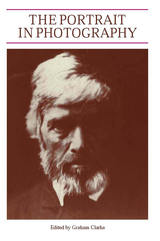
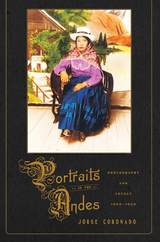
Photography offered an inexpensive and readily available technology for producing portraits and other images that allowed lower- and middle-class racialized subjects to create their own distinct rhetoric and vision of their culture. The powerful identity-marking vehicle that photography provided to the masses has been overlooked in much of Latin American cultural studies—which have focused primarily on the elite’s visual arts. Coronado's study offers close readings of Andean photographic archives from the early- to mid-twentieth century, to show the development of a consumer culture and the agency of marginalized groups in creating a visual document of their personal interpretations of modernity.

In 2003, Jorge Mario Múnera won the Latino and Latin American Art Forum Prize at Harvard University, which entitled him to produce and present an exhibit at Harvard’s David Rockefeller Center for Latin American Studies. By this time, Múnera had already produced an important body of work, revealing even the farthest corners of his native Colombia through his photographs of people and their traditions.
Portraits of an Invisible Country, which bears the name of the exhibit he presented at Harvard in 2004, is the culmination of a five-year collaboration between the photographer and the curator of the show, José Luis Falconi. It comprises a book of essays with insightful reflections on Múnera’s diverse body of work and a series of sixteen photo posters, which together highlight the photographer’s travels within Colombia and his careful depiction of his countrymen and women.
Renowned in Colombia as one of the most prolific and influential photographers of his generation, Múnera was the first recipient of the National Photography Award in Colombia in 1998. Since then, numerous international accolades have followed, chief among them as the first photographer to hold the Andrés Bello Chair of the King Juan Carlos Center at New York University.

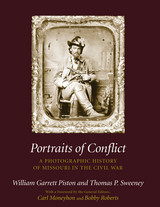
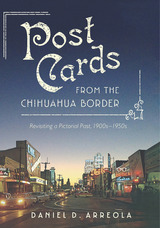
In Postcards from the Chihuahua Border Daniel D. Arreola captures the exhilaration of places in time, taking us back to Mexico’s northern border towns of Cuidad Juárez, Ojinaga, and Palomas in the early twentieth century. Drawing on more than three decades of archival work, Arreola uses postcards and maps to unveil the history of these towns along west Texas’s and New Mexico’s southern borders.
Postcards offer a special kind of visual evidence. Arreola’s collection of imagery and commentary about them shows us singular places, enriching our understandings of history and the history of change in Chihuahua. No one postcard tells the entire story. But image after image offers a collected view and insight into changing perceptions. Arreola’s geography of place looks both inward and outward. We see what tourists see, while at the same time gaining insight about what postcard photographers and postcard publishers wanted to be seen and perceived about these border communities.
Postcards from the Chihuahua Border is a colorful and dynamic visual history. It invites the reader to time travel, to revisit another era—the first half of the last century—when these border towns were framed and made popular through picture postcards.

Taking Frank’s iconic images as his point of reference, Day shot new photographs that commented on the road and contemporary America. Here, these images are paired with critical commentary that details the aspects of the work that are visually expounded and explained in Day’s complementary images. A visual entryway to the photographs and themes of this iconic book in the history of photography, Postcards from the Road represents an innovative, carefully considered departure from standard photographic textbooks.
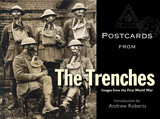
The cards in this compelling volume were created not only by soldiers, but also by embedded journalists from France, Belgium, Austria, Germany, and Britain. The images capture scenes both humorous and poignant, including soldiers having a mock party with little food to eat, wounded soldiers smiling for the camera, a makeshift trench hospital, the bloody aftermath of a battle, and a huddle of men taking what they know could be their last communion before marching onto the battlefield. Other cards document the mundane duties that dominated wartime life, including men digging trenches, troops marching to new trenches and battlefields, and or soldiers nearly comatose with boredom while waiting for the fight to begin. This stunning visual narrative opens a new window into one of the most analyzed events in history, as the postcards’ images testify to the resilience and bravery of soldiers in the most trying circumstances.
A fascinating and unprecedented historical document, Postcards from the Trenches draws back the curtain to unflinchingly show the daily horror and humanity that define life in war.
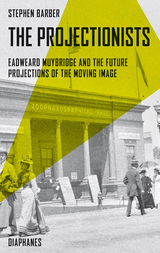
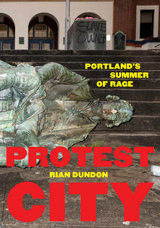
In the months leading up to the 2020 presidential election, Portland made national news with nightly social justice protests, often met with violent response by counter protestors and law enforcement. Though frequently regarded as a progressive hub, Portland has a long history of racial inequality and oppression, and the city’s entrenched divisions gained new attention during the Trump years. The photographs in Protest City present a visceral visual record of this significant moment in Portland’s history.
Rian Dundon, who has been photographing the rise of extreme politics on the West Coast since 2016, lived only a short walk from the protests that erupted after the murder of George Floyd. For one hundred days, Dundon enmeshed himself in the demonstrations with an unobtrusive point-and-shoot camera. The result is a graphic portrayal of how social movements become politicized, how spectacle serves as a subtext to change in the digital age, and how modern protests blur distinctions among performance, ritual, and surveillance. As he follows the progress of Portland’s conflicts, Dundon draws connections to Oregon’s legacy as a stronghold of white supremacist extremism and interrogates the role of whiteness in racial justice movements.
Dundon’s striking photos recreate the immediacy and impact of the protests, while a foreword by journalist Donnell Alexander and introduction by historian Carmen P. Thompson contextualize the uprising’s sociopolitical background. A chronology and author’s note are also featured.
The publisher and author would like to thank the Magnum Foundation, Documentary Arts, and the Economic Hardship Reporting Project for their generous support of this publication. Additional funding has been provided by Furthermore: a program of the J. M. Kaplan Fund.
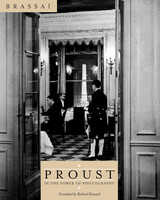
Drawing on his own experience as a photographer and author, Brassaï discovers a neglected aspect of Proust's interests, offering us a fascinating study of the role of photography both in Proust's oeuvre and in early-twentieth-century culture. Brassaï shows us how Proust was excessively interested in possessing portraits of his acquaintances and how the process by which he remembered and wrote was quite similar to the ways in which photographs register and reveal life's images. This book-beautifully translated by Richard Howard-features previously obscure photographs from Brassaï's High Society series and offers a rare glimpse into two of France's most fascinating artistic minds.
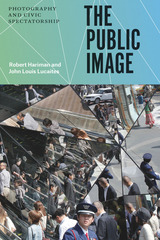
By confronting these conflicted reactions to photography, Robert Hariman and John Louis Lucaites make the case for a fundamental shift in understanding photography and public culture. In place of suspicions about the medium’s capacity for distraction, deception, and manipulation, they suggest how it can provide resources for democratic communication and thoughtful reflection about contemporary social problems.
The key to living well in the image world is to unlock photography from viewing habits that inhibit robust civic spectatorship. Through insightful interpretations of dozens of news images, The Public Image reveals how the artistry of the still image can inform, challenge, and guide reflection regarding endemic violence, environmental degradation, income inequity, and other chronic problems that will define the twenty-first century.
By shifting from conventional suspicions to a renewed encounter with the image, we are challenged to see more deeply on behalf of a richer life for all, and to acknowledge our obligations as spectators who are, crucially, also citizens.
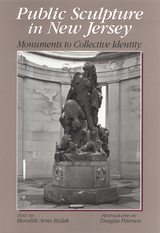
New Jersey boasts more than 700 public sculptures. When viewed as a group, these works give us great insights about who helped to shape New Jersey, what events we considered significant, and how we hope we will be remembered. Public Sculpture in New Jersey examines 150 years of past and current patterns in the commissioning and placement of outdoor art in the Garden State.
The book contains essays that profile the state’s 100 most significant works as well as the artists who created them, and features nearly 100 magnificent photographs that document these works, capturing the effects of time and the environment on each sculpture. Bzdak and Petersen selected these works for the variety of stories they tell and for their range of artistic expression, from traditional to contemporary, rather than focusing only on the best known or most visible works of public sculpture. By telling the stories behind the sculptures, the book captures New Jersey’s history, especially history that may not be well known but that conveys significant information about how our predecessors lived and the official images they sought to leave behind.
READERS
Browse our collection.
PUBLISHERS
See BiblioVault's publisher services.
STUDENT SERVICES
Files for college accessibility offices.
UChicago Accessibility Resources
home | accessibility | search | about | contact us
BiblioVault ® 2001 - 2024
The University of Chicago Press









